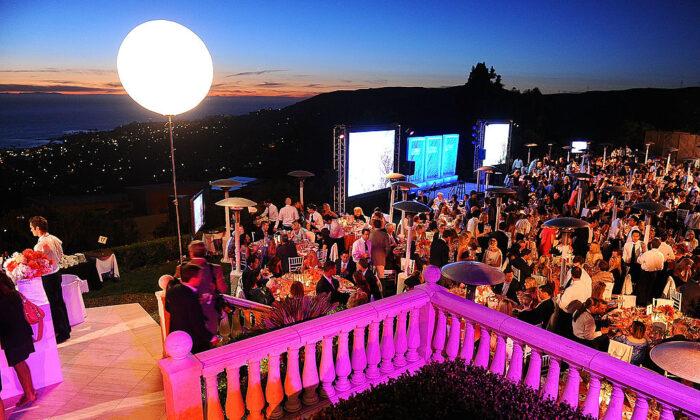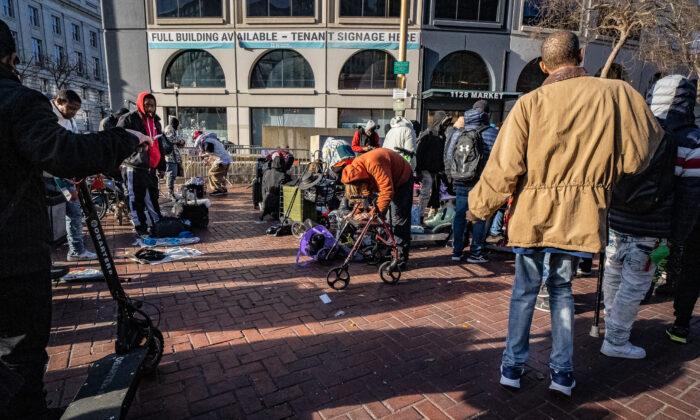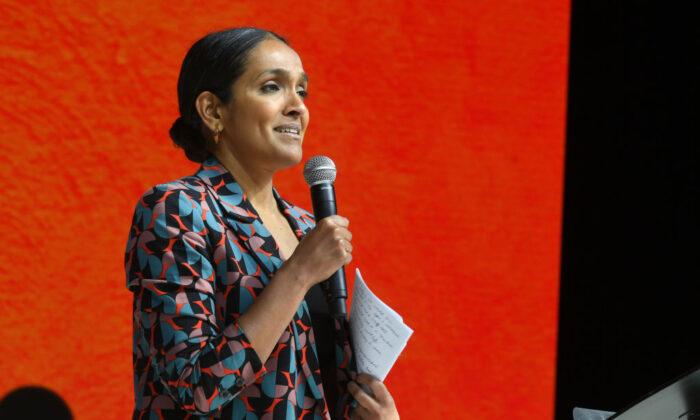LAGUNA BEACH, Calif.—“Laguna Beach is a magical place,” Elizabeth Leeds says.
She should know: A Laguna native, she’s lived there since 1941.
“The one thing I love about Laguna is that it’s real,” Leeds told The Epoch Times. “That’s what the residents like. That’s what the tourists like.”
And that’s what Leeds hopes to preserve, as some in the city push for modernization and a trendier vibe.
A town of just over 20,000 residents, Laguna Beach sits on the coast of Southern California, surrounded by ocean, steep cliffs, deep canyons, and rolling hills.


It has a nostalgic small-town feel. But it’s also a favored location for star-studded events, including the annual Festival of the Arts.
It draws tourists for its eccentric art scene, secluded coves, historic buildings, and its renowned Pageant of the Masters that recreates famous paintings with living people.
It’s been that way since the 1960s—and that’s the way many longtime locals like it.
Its neighbors, on the other hand, have undergone massive overhauls in recent years.



Laguna Beach is feeling the pressure to keep up with its progressive neighbors, Newport Beach and Corona del Mar, without stripping the city of its historic charm through redevelopment.
It’s been struggling with a slowing downtown presence, an outdated infrastructure, failing businesses, vacancies, and a lack of luxury hotels. Solutions to these issues have divided locals and city leaders—splitting the small city into factions and bringing into question the vision of what Laguna will be in the future.
Longtime Activist
Leeds, 79, has been active in Laguna Beach politics since she was a child.“When I was 8, I was walking down the street and I heard this horrible noise, this screeching,” Leeds said. “My next-door neighbor almost got killed. So a whole bunch of people came out, all worried, and everybody said there should be a stop sign.”
Leeds agreed. That night, she attended her first City Council meeting, marching in and demanding a stop sign on Laguna’s famed Cliff Drive.
“It needs to happen right now, because it’s very dangerous!” the youngster told the Council. “And they laughed at me.”
She decided to take action on her own, before someone was killed. So she set up a chair at the intersection, and began directing traffic herself.
“The next day, the city truck came by and there it was,” Leeds added proudly.
Since then, Leeds has remained active in local politics. She has protected neighborhood trees, lobbied successfully to stop offshore oil drilling, and fought developers who wanted to tear down historic buildings.
She, along with other longtime residents part of an influential local activist collective known as Village Laguna, believes that Laguna just needs some tender loving care—not more developments.
“TLC are the three most important letters for Laguna,” Leeds said.
But other residents look at the deteriorating infrastructure, lack of parking, cumbersome bureaucracy, and homelessness as issues that require major overhauling.
A New Vision
Mohammad Honarkar and his daughter, Hasty, have lived in Laguna since the 1980s.Together, the Honarkars own multiple real estate investment firms and development companies, with a mission to “revitalize the downtown.” They have invested nearly $500 million in properties—which has upset some in the community, including Village Laguna.
“Times change, things need to be updated,” Hasty Honarkar told The Epoch Times.
One of their larger projects was revamping the famous Hotel Laguna, which opened in the 1880s. Another is the proposed Cleo Hotel project, which would demolish the existing Laguna Beach Holiday Inn and replace it with a mixed-use commercial and residential development.

“I think Laguna is at a turning point, where it’s trying to figure out who it is and if it’s still what it used to be, and what it wants to be in the future,” Hasty Honarkar said.
“The problem with Laguna that’s been happening for years is that the big developers come in and they buy properties,” Leeds said. “[Then] they go vacant because the rents are too high.”
“There are a couple different sides in the community, and everyone needs to be more willing to work together,” Hasty Honarkar said.
Activists at Odds With City Council
Village Laguna was founded in 1971, born out of the fear that the small town would turn into another Miami Beach, complete with high-rises, nightclubs, and overcrowding.At the time, Laguna’s identity was being threatened by neighboring coastal cities, which were developing extravagant hotels and amenities aimed at attracting tourists.
So the group successfully pushed the City Council to pass a regulation limiting the height of buildings to 36 feet.
Since then, the group has acted as unofficial gatekeepers of the community, endorsing civic leaders and helping set regulations and policies.


“We’ve kind of been a watchdog of the city,” Felder told The Epoch Times. “That’s what we’ve done all through the years—to keep Laguna looking like Laguna, and to keep the small-town feel, the historic buildings, the trees.”
But Village Laguna is often blamed by locals for the city’s restrictive business and development nature.
Business owners face time-consuming bureaucratic barriers to development. Those barriers include a Design Review Board assessment and a Conditional Use Permit, which allows for zoning exceptions but can take several months to obtain.
The restrictions vary, from what kind of paint businesses can use, to determining the types of light fixtures, products, and other minute details.
While many local business owners blame Village Laguna for the bureaucracy, Felder blames Laguna Beach’s five-member City Council for the problem.
“We try to get like-minded council-people elected, … [but] we have not had a majority on the Council for over 20 years, so you cannot blame Village Laguna for what’s going on in town,” Felder said.
Village Laguna supports the Design Review Board to ensure the town’s character and atmosphere are preserved; but she said the Conditional Use Permit is too onerous.
“Things could be spruced up, but the City Council has the power to do that,” she said.
That’s where Peter Blake comes in.
Blake swept onto the City Council in November 2018 with a strong message that has split the small hamlet. He openly embraces “incivility”—if that’s what it takes to save the city.
The Retail Apocalypse
“Nothing we do in the downtown is going to change the fact that Amazon has taken over,” Blake told The Epoch Times.“It’s a bigger issue than Laguna. But what is a Laguna issue is: what do we plan on doing about it that’s going to keep us from getting buried by it?” Blake said.
Blake, 55, has lived in Laguna for 31 years, but only recently decided to become active in local politics. He was tired of watching the city’s infrastructure deteriorate under what he called Village Laguna’s “stranglehold,” in the Daily Pilot interview.
“They did some incredible things back in the early ‘70s. They created the height restrictions, so that we didn’t become a Huntington Beach,” Blake told The Epoch Times.
“They set into motion what saved this town, at a juncture where we were heading into bigger buildings. And they stopped that from happening. They did an incredible job.”
But now, Blake—who owns a downtown art gallery—feels the group is hampering the city’s efforts to improve itself. Village Laguna has created a “power base” within City Hall and the City Council, he believes.

He said it’s creating obstacles for businesses, such as the design review process and additional property taxes.
These obstacles make it especially difficult for younger people who grew up in Laguna and may want to return after college to start businesses of their own, he said.
“Now they’re asking, ‘Well, where’s my future here?’”
Blake admitted many different factors, apart from Village Laguna, are to blame for failing retail stores, including what he called “the Amazon effect.”
Blake ran for City Council on a platform that espoused reforming the Design Review Board—as well as removing the homeless from Laguna—to spur local business.
He received nearly 5,000 votes, more than any of the other candidates elected to the Council.
Outside Guidance
To identify the explicit factors contributing to Laguna’s slowing economy, the City Council commissioned an outside economic adviser to do a market evaluation of the downtown.The report collated sales, population statistics, and income figures to assess the overall performance of Laguna’s businesses.
- Too many of the same kind of businesses in retail, apparel, and restaurants;
- a lack of certain businesses the downtown area is unable to attract, specifically in women’s clothing, cosmetics, and entertainment;
- a lack of a luxury hotel in downtown to accommodate overnighters, resulting in 95 percent of visitors being day-trippers;
- a deteriorating infrastructure, surging vacancies, and dimly-lit streets;
lack of parking structures for visitors, traffic congestion, and the need for safer pedestrian walkways.
The lengthy DSP was first approved in 1989, and has been amended regularly since by the City Council—most recently in October 2019.
Village Laguna, for its part, doesn’t approve of the latest suggestions.
“We have residents who live downtown, and one of the things with the DSP is they wanted to increase the height limit to increase residentials, and they think it'll revitalize downtown, but I’m not sure it would,” Felder said.
“Once you move people into those residentials, they don’t want people partying at 11 o'clock at night,” she said.
“And I am older and I have been here longer, and I understand that things do change,“ she said. ”But people come to Laguna Beach for a reason. They also go to Newport for a reason.”
According to Hasty Honarkar, the local criticisms that have prevented the DSP from moving forward stem from the same “vocal minority” that has controlled city politics for decades.
“We really appreciate those that have helped maintain the charm that [Laguna Beach] has, but it’s important that everyone’s voices are heard and not just the handful of people that are the loudest,” she said.
Another longtime resident, multimedia artist Michaell Magrutsche, agreed.
“One of the core misunderstandings that Laguna Beach has is that 5 to maximum 8 percent are deciding on what should happen in this town,” Magrutsche told The Epoch Times.
“With the rest of 95 percent having no clue, and don’t want to know because their neighborhood and schools are working and their property investment is locked in.”
He added: “Most look at the beauty of this place and have already accepted that there is no downtown. They just go to the surrounding cities for a city experience.”
But on Feb. 26, the DSP made a step forward.
The Planning Commission agreed to pass the DSP’s market evaluation on to City Council, after hearing a dozen public comments from local business owners.
Local Businesses Speak Up
Amir Garavir owns and runs the Anastasia Cafe, an upscale clothing store that also sells drinks and lunch items, located a few blocks from Laguna’s Main Beach.Garavir, who has lived in Laguna for 36 years, agreed with many of the market evaluation’s findings.
His customers are often frustrated by the lack of parking, he told The Epoch Times, and they need a better selection of shopping experiences.
“The parking has become such a hassle for these people,” Garavir said. “They have to turn and turn and turn to find a place. The town has been managed really poorly.”



He, too, has become frustrated by local politics, and has a “very negative view of what’s going on here.”
Garivir blames the activist groups for the stagnation, and said they “are a big problem in Laguna.”
“I think they don’t want to understand it,” he added. “There’s a quiet majority, we call it. This quiet majority, we have to make a living.”
The activist groups, he said, are not in the business of running a business.
“The people who are in business pay for this town,” he added. “I pay business tax, I pay personal tax in this town. But this is bringing nothing and they are against everything.”
Leeds, one of those activists, is also an entrepreneur who has owned a local vegetarian restaurant and a jewelry business. She echoed Felder’s sentiment that the design review is necessary to preserve the character of the town, but that City Council should lift other restrictions on businesses.
Garivir explained that his daughter was in litigation with the city for five years to open her own business because the Design Review Board wouldn’t grant qualification.
She paid $500,000 for additional architectural plans to appease the Board and in attorneys’ fees “to fight with the city,” Garavir said. In the five years it took, the cost of construction doubled.
“They make it difficult for the right people to come to a town that is already expensive,” said Garavir.
Other business owners side with Village Laguna’s more conservative approach to renovation in some respects.
“Basically, I know downtown needs some revamping,” local business owner Miche McClendon told The Epoch Times. “Changing sidewalks to make it more foot-traffic friendly is a good idea.”
But McClendon, who owns a jewelry store, thinks the restoration is going too far when it comes to tree removal—another thorny issue that has divided the city.
“Taking out trees that are broken or actually really compromised makes sense, but they’re being very heavy-handed with all of the beautiful oak trees being marked to take out as well,” McClendon said.
She called the overreach a “total waste of money and life.”
The 307-page DAP has further divided the city.
Leeds said the tree removal issue is “creating stress for Laguna” and compared the action to giving the town a radical haircut.
“Just leave your hair alone, it’s beautiful, you don’t need to shave your head and get a wig,” she said.

Issues Beyond Laguna
Many of the issues facing Laguna’s local businesses are due to the economic climate confronting California as a whole.Change Is Hard
Hasty Honarkar said, “There will always be people who will be against any changes or any developments.”Felder recognizes that prospective business owners shy away from Laguna Beach due to the regulations there. Surrounding communities are more business-friendly.
She said wants to see some regulations eased, while maintaining the ones that keep Laguna’s essential character intact.
“Most of us moved here because we like the historical homes that are sprinkled through the town, we like the funkiness of it. It doesn’t look like Newport Beach, it doesn’t look like Rodeo Drive. We don’t want it to look like Rodeo Drive.
“If things could be constructed to look like Laguna, that would be what we would like to have.”
Blake said: “They [Village Laguna] keep picking apart little aspects of the Downtown Specific Plan, and they kind of create this false narrative and use heartstrings to pull on.”
COVID-19 Delays
Laguna Beach is closing down, like so many other towns, to prevent the spread of COVID-19. Blake said that every design review meeting and city planning meeting that is postponed will make it harder to catch up when this is over.The citywide approach will probably be scaled down to focus on Forest Avenue, he predicted.
“What looked like a short-term goal has now turned into a long-term goal,” he said.





